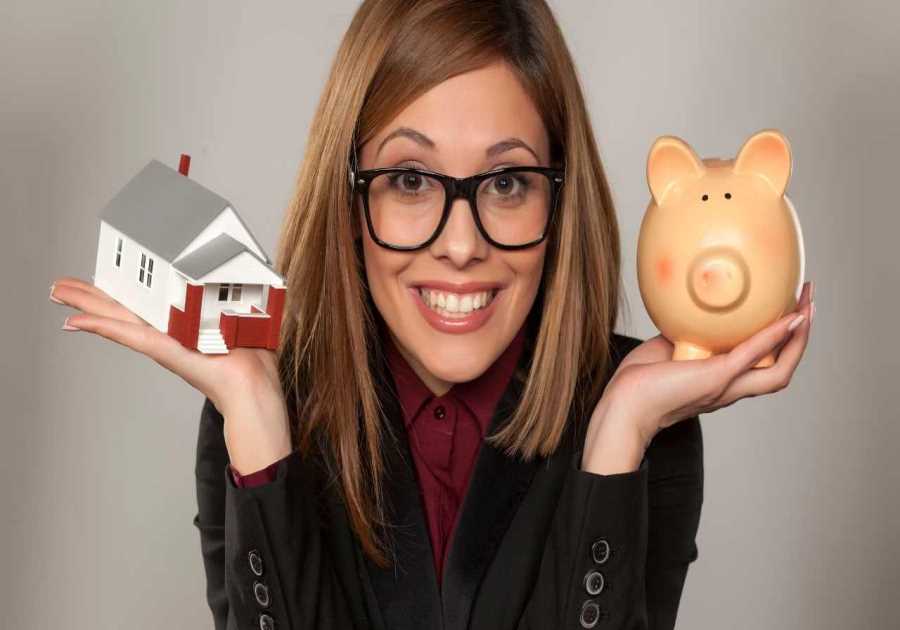When you buy through our links, Business Insider may earn an affiliate commission. Learn more
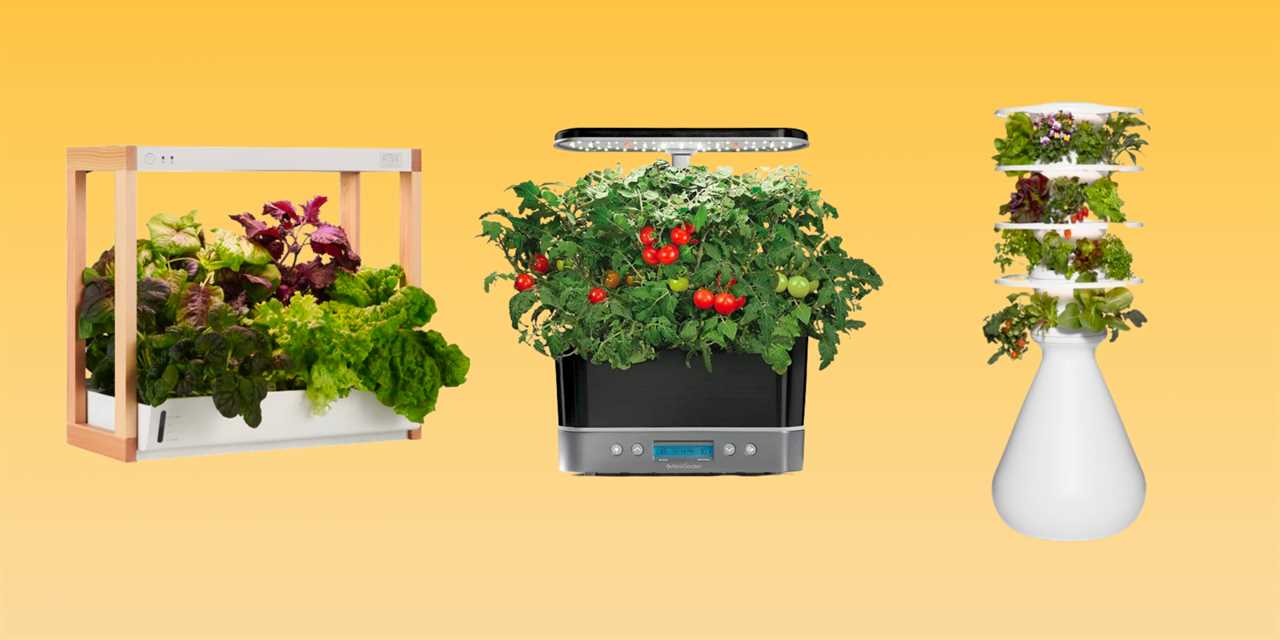
Rise Garden/Aerogarden/Lettuce Grow/Business Insider
While an idyllic garden bursting with produce sounds lovely, outdoor gardening can be unpredictable. Head inside, and whether you're growing herbs, leafy greens, or microgreens, your brown thumb can instantly become a little greener.
When you go hydroponic, a form of gardening where plant roots grow in water rather than soil, weather, pests, and weeds aren't an issue. Without the wild outdoor conditions to worry about, you can enjoy a steady stream of edible plants grown hydroponically. Hydroponic crops also grow more predictably and require less water overall than soil-based plants.
The best indoor herb gardens are easy to use, simple to clean, require minimal maintenance, and feature convenient automated lighting. We extensively tested five indoor gardens, researched dozens more, and consulted an indoor growing expert to develop this guide to the best indoor herb gardens. Our top pick for the best hydroponic garden is the Rise Personal Garden, thanks to a combination of ease of use, streamlined aesthetic, and smart features. For a budget pick, we recommend the inbloom Hydroponic Growing System. At $50, it's a solid option for gardening beginners.
Read more about how Insider Reviews tests and research home products here.
Our picks of the best indoor herb gardens
Best overall: Rise Personal Garden - See at Amazon
Best indoor herb garden: Aerogarden Harvest Elite - See at Amazon
Best budget: inbloom Hydroponic Growing System - See at Amazon
Best for small spaces: Click and Grow Smart Garden 9 - See at Amazon
Best for beginners: Aerogarden Sprout - See at Amazon
Best freestanding: Rise Triple Family Garden - See at Rise Gardens
Best for microgreens: ingarden Microgreens Growing Kit - See at Amazon
Best for salad: Lettuce Grow Farmstand - See at Lettuce Grow
Best overall
The Rise Personal Garden is an ideal choice if you're looking for an indoor garden that can produce a steady stream of greens and herbs without giving up floor space.
In addition to a sleek, Scandinavian-esque design, the compact countertop garden features a spacious, easy-to-fill water reservoir, automatic lighting controlled via a smartphone app, a pump that keeps water circulating to prevent algae growth, and space for eight grow pods — enough to produce a few heads of lettuce and your favorite herbs.
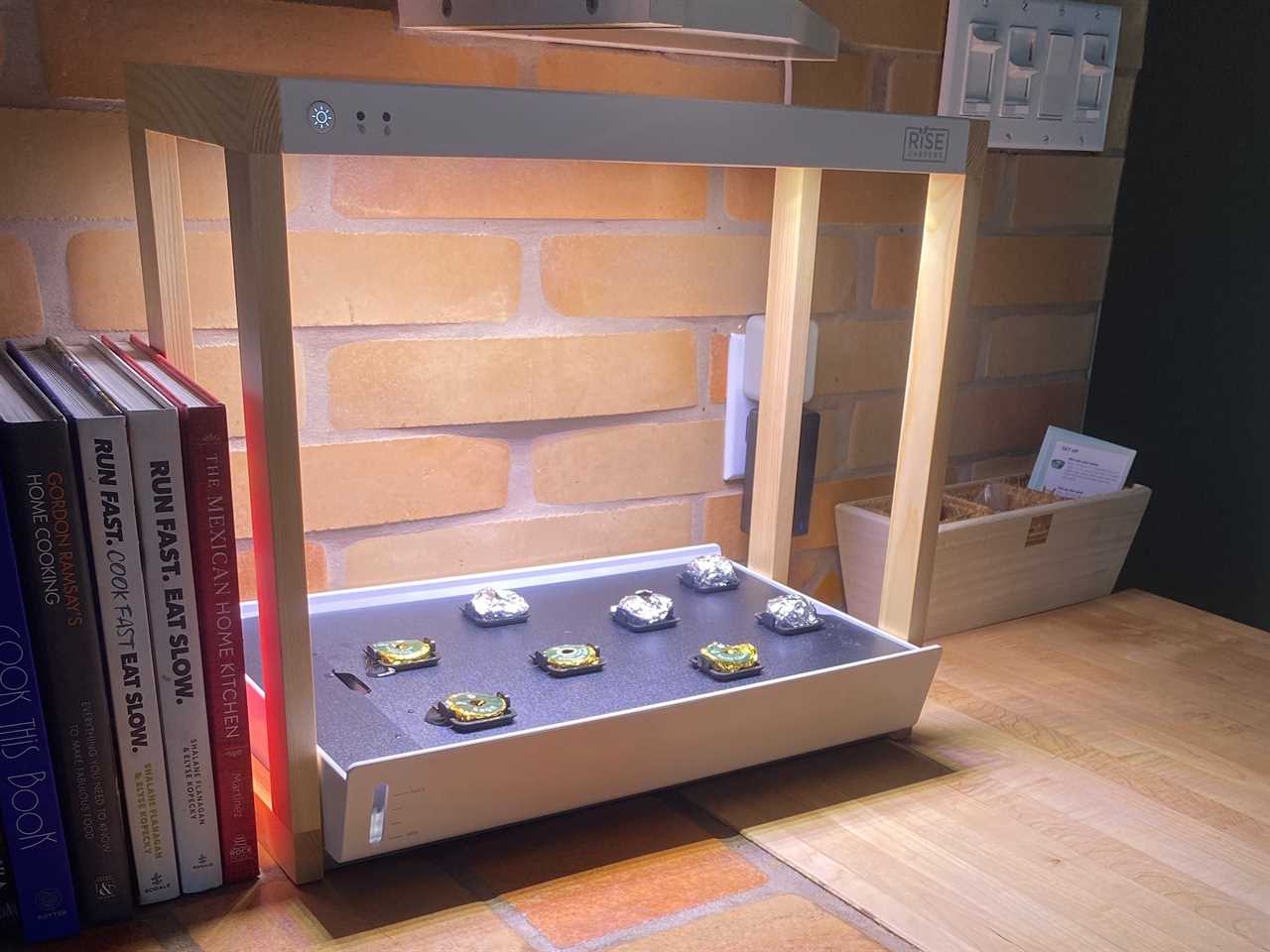
Steph Coelho/ Business Insider
A light indicator at the top right of the unit lets you know when the water needs topping up — you can also check the water level via a clear window on the bottom left of the base.
The smartphone app helps you track the progress of your plant pods and alerts you when it's time to add nutrients. One minor nitpick: the app often recommends you harvest when plants aren't big enough, which might confuse those newer to indoor cultivation.
While Rise no doubt pushes its line of pods, nutrients, and accessories, more advanced gardeners will have no trouble hacking the unit with budget-friendly alternatives. There's also a fairly active online community of Rise gardeners who openly share tips and tricks on getting the most out of your indoor herb garden.
Read our Rise Personal Garden review.
Best for herbs
Most people who dream of having fresh basil or parsley on hand in their kitchen make the mistake of wasting money on potted grocery store herbs. But you'll get more bang — and tasty, fresh herbs — for your buck with a unit like the Aerogarden Harvest Elite.
The sleek, compact garden requires minimal upkeep; top up the water reservoir and pop in a cap full of nutrients when the light indicators tell you to, and that's about it. The lights turn on and off automatically, giving your growing plants the ideal light-to-dark ratio.
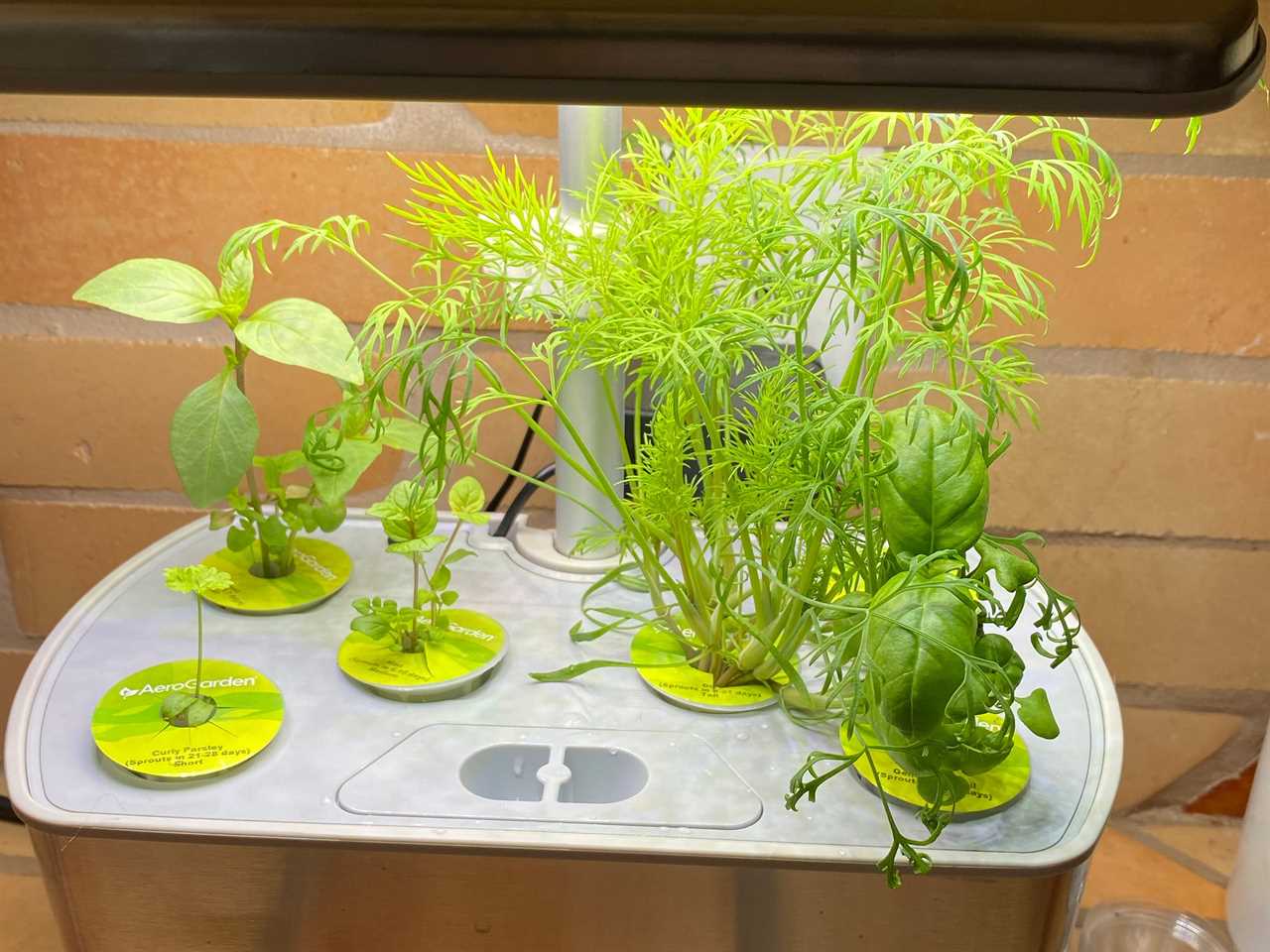
Steph Coelho/Business Insider
Every so often, you need to shift the height of the light to accommodate taller growth (up to 12 inches). And, of course, make sure you're harvesting regularly.
The one downside? The light is warmer to the touch than ideal and has the potential to burn plant tips should you forget to adjust it in a timely fashion. But with so little maintenance required overall, having to adjust the light occasionally is hardly a dealbreaker.
And if you're heading off on a trip, you can turn on vacation mode, which cuts the lighting by about 50% and helps your plants use up less water, ensuring they'll be alive and well when you return.
Read our Aerogarden Harvest review.
Best budget
A fresh supply of greens and herbs for cooking sounds incredible, but with so many garden models priced over $100, it can feel like a reality out of reach to many.
The inbloom Hydroponic Growing System is an affordable alternative to pricier indoor gardens with many of the same coveted features, making it a solid pick for folks new to gardening or on a budget.
The 5-pod garden comes in gold, green, or white and includes everything you need to start growing straight out of the box: grow baskets, pods, domes, and nutrients. The automated lighting system has two growing modes, one for veggies and the other for fruiting plants. It's important to note that while the height of the light is adjustable (up to 17.25"), some reviewers note there's not enough space to accommodate large plants like tomatoes. The company does offer some larger 10 and 12-pod units, but their heights max out at 12 inches.
In addition to a BPA-free construction, the unit is double-walled to help prevent mildew growth and has a quiet pump to keep water flowing so it doesn't sit and produce algae. A water indicator lets you know when it's time to refill.
Reviewers love the little garden for growing herbs. The value price tag also makes it a great host or hostess gift.
Best for small spaces
Think of the Click & Grow Smart Garden 9 like the Rise's analog sibling. It's a compact, low-frills unit ideal for gardeners who want a space-saving indoor growing machine without having to deal with smartphone apps and WiFi connectivity.
Setup is a breeze. Just click the parts together, fill the water tank, pop in the pods, and plug in the unit. FYI: Since there's no way to control the lighting via an app, the lights will automatically start their on/off countdown (16 hours on, 8 hours off) from the moment you plug them in, so you may want to wait before powering on the garden.
The Click & Grow holds up to nine pods, and each unit ships with 9 starter pods (3 tomato, 3 basil, and 3 lettuce). When you need to replace the pods, there are many options to choose from, including flowers, herbs, and various leafy greens.
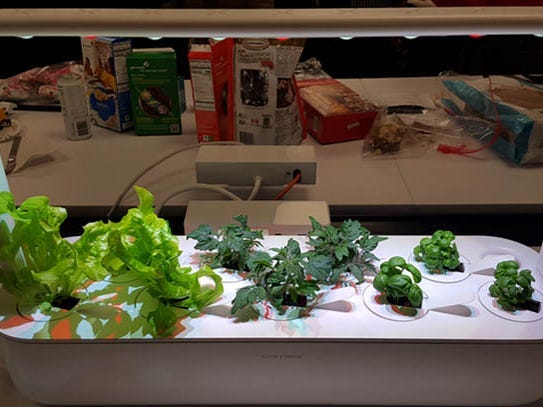
Connie Chen/Business Insider
While there's no pump to circulate water, algae build-up is unlikely, thanks to the thick base construction and limited light infiltration. We did miss having a visual indicator, like a flashing light, to let us know when the garden needed a water top-up.
It's also worth noting that while most plants have a limited lifespan in all gardens, the Click & Grow models aren't true hydroponic gardens, so you'll naturally have a higher plant turnover rate with this unit.
Click & Grow also has a variety of other indoor garden models, including an app-controlled version called the Click & Grow Smart 9 Pro that lets you control the device's lights and set a lighting schedule and an impressive wall unit called The Wall Farm Indoor Vertical Garden.
Read our full Click and Grow Smart Garden review.
Best for beginners
There's a good reason newbie and intermediate gardeners alike flock to Aerogarden. Their indoor gardens consistently score high customer ratings, and there's something for everyone.
Room for more pods isn't always better and can even be overwhelming for those new to growing from seed. The Aerogarden Sprout is the tiniest indoor garden on our list, but it's still a powerful growing machine. The 3-pod design of the Sprout makes it a good fit for newer gardeners.
It's available in three colors: black, white, and grey. And despite its small size, it still has a pump to keep water flowing and oxygenated. The grow light is adjustable up to 10 inches and automatically turns on and off to give your plants the ideal ratio of light to darkness.
At the top of the unit, there's also a water and plant food reminder light. On the side, a transparent window lets you easily spot when the water is running low.
Unlike the Harvest Elite, there's no vacation mode for the Sprout. But otherwise — size and aesthetic being the exception — the two units have all the same features customers love.
Best freestanding
The Rise Family Garden is a bigger and beefier version of the brand's countertop model that we selected as our best indoor herb garden pick. It's available in one, two, and three-tier options. The modular design of the family garden makes it easy to start small and expand growing capacity over time. Each tier is comprised of a tray that can accommodate up to 36 plants, but Rise also sells trays with higher capacity that are great for seed starting.
The bottom section is the tallest and ideal for growing crops like tomatoes and peppers. The shorter shelves are perfect for growing crops like baby kale, herbs, and lettuce.
Each unit ships with a starter pack of nutrients, seed pods, net cups, and a nursery to get you started. Once assembled, fill the water reservoir and connect to WiFi to use app-based smart features like water reminders, automatic plant care, and lighting schedules. Like the Personal Garden, the freestanding Rise also has a pump that circulates water throughout the unit to prevent pests and algae from settling in.
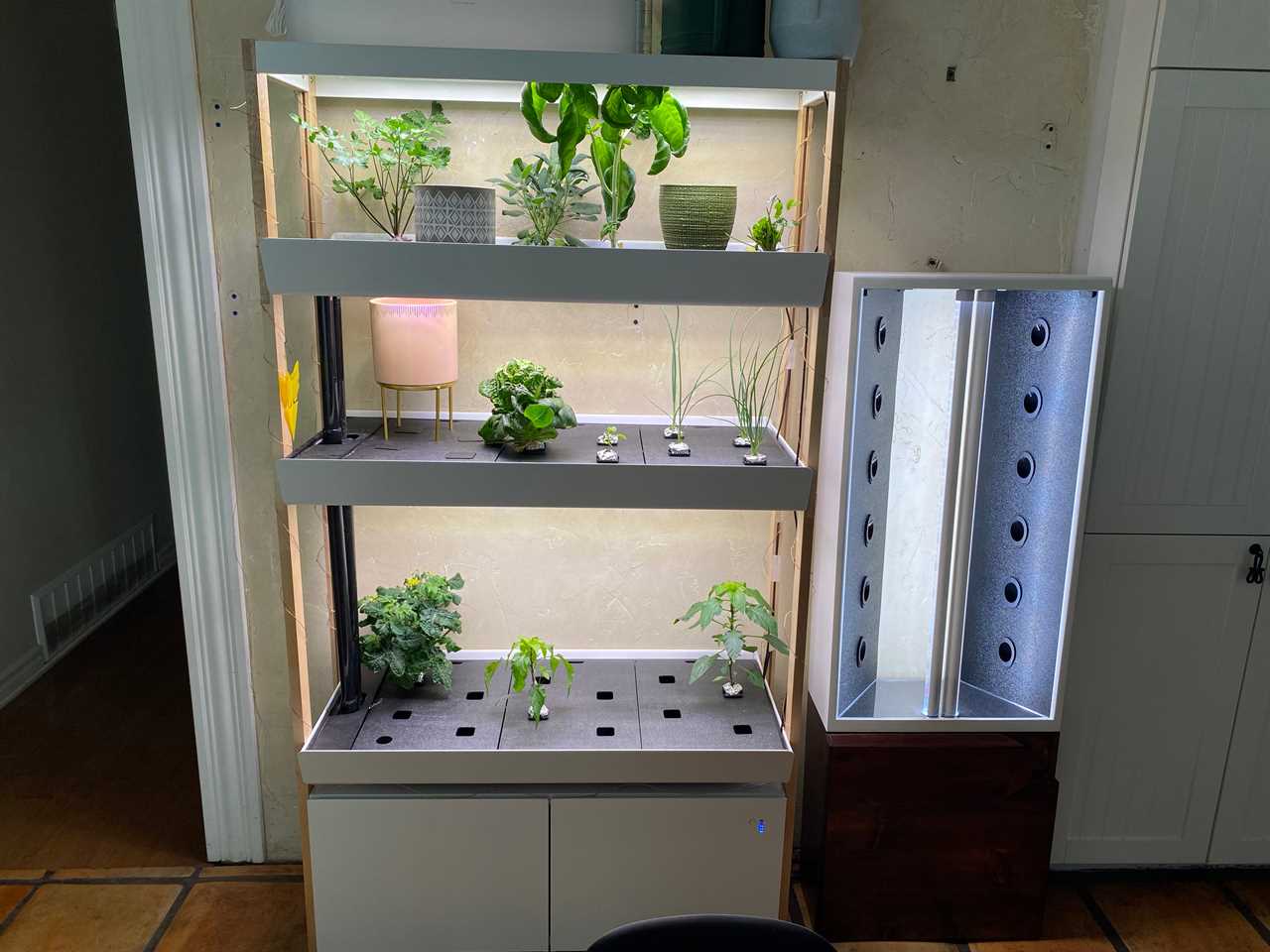
Steph Coelho/Business Insider
Since releasing the original Family Garden, Rise has made some important upgrades to the newest version, including easier assembly, sturdier materials, a bigger water tank, and improved water resistance for electronic components. Rise has also since introduced a new freestanding garden, the Roma, designed to accommodate tall tomato plants.
It's essential to remember that, unlike smaller indoor gardens, a full-size unit like the Rise requires some regular maintenance. There's also some planning and organizing that goes into maintaining a steady supply of produce — including routine cleanings, prunings, harvesting, and nursery plantings. It can't completely replace an outdoor garden — it's not ideal for growing root crops like carrots and potatoes, for instance — but it's a great way to grow nutritious, tasty, picture-perfect produce year-round.
Best for microgreens
Supercharged salad greens? Yes, please! Microgreens are immature plants typically harvested at 1-3 weeks. They're small but mighty, packed with nutrients and flavor. While you've likely seen them added to upscale restaurant dishes as a garnish, you can grow them easily on your own.
DIY microgreen growing is one way to go, but it can be messy and fussy. The ingarden is a stylish alternative that self-regulates water, humidity, and lighting to create the optimal microgreen growing environment.
The Swedish-designed garden is available in five colors: black, beige, mint, rose, and light blue. When you purchase directly from the website, you can choose a one-off purchase or subscribe to receive a regular supply of seeds.
The parts are made with sustainable materials (stainless steel and recycled ocean plastic or ceramic) and are dishwasher-safe for easy cleanup. Each garden comes with three certified organic seed pads. To grow, place the pads, pour water, press the button, and wait 5-7 days before harvesting. Once you're done with a seed pad, toss it into the compost.
Reviewers note that the ingarden makes growing microgreens foolproof. Many also say they appreciate its modern design. However, a few reviewers point out that they wish there were more microgreen options to choose from. Pro tip: You can also buy replacement microgreen growing pads and seeds via Amazon.
Best for salad
Creating a tasty, nutritious salad is a bit of an art form. You need different textures and flavors, like crunchy, savory nuts, soft cheeses, and sweet dried fruit. But your base green or green mix also makes a big difference.
A kitchen garden like the Lettuce Grow Farmstand keeps you stocked with lettuce and other greens so you can create the salad of dreams daily.
The indoor/outdoor Lettuce Grow stand is available in multiple sizes and can accommodate up to 36 plants in just a few square feet, but it requires a GFCI power outlet regardless of where you place it. Because the original Lettuce Grow doesn't have attached lights, you need to place it in a spot with plenty of natural sunlight or purchase a grow light separately. The company also offers a model called The Nook, with built-in lights for indoor use only and a 20-plant capacity.
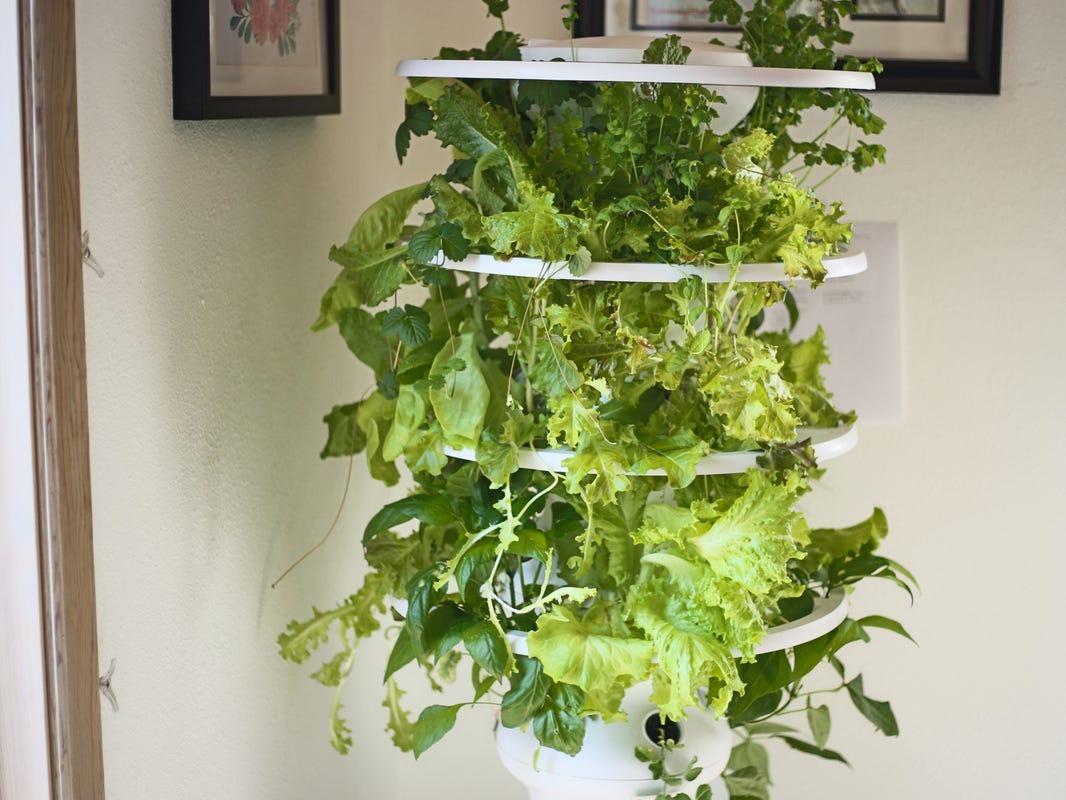
Suzie Dundas/Business Insider
One major advantage of the Lettuce Grow is that it uses starter seedlings instead of seed pods. This translates to less trial-and-error and faster time to harvest — less than 2 weeks for herbs and about 3 weeks for greens like lettuce and kale based on our testing.
You may also need to make note of which plants you're placing where since the seedling pods don't come with attached labels. Also of note, while the Farmstand itself is not wifi-enabled, the accompanying Lettuce Grow App has a Plant ID feature to help you identify plants or troubleshoot any potential growing issues with concierge support as well as reorder seedlings and send reminders.
Read our full Lettuce Grow review for more information.
What to look for in an indoor herb garden
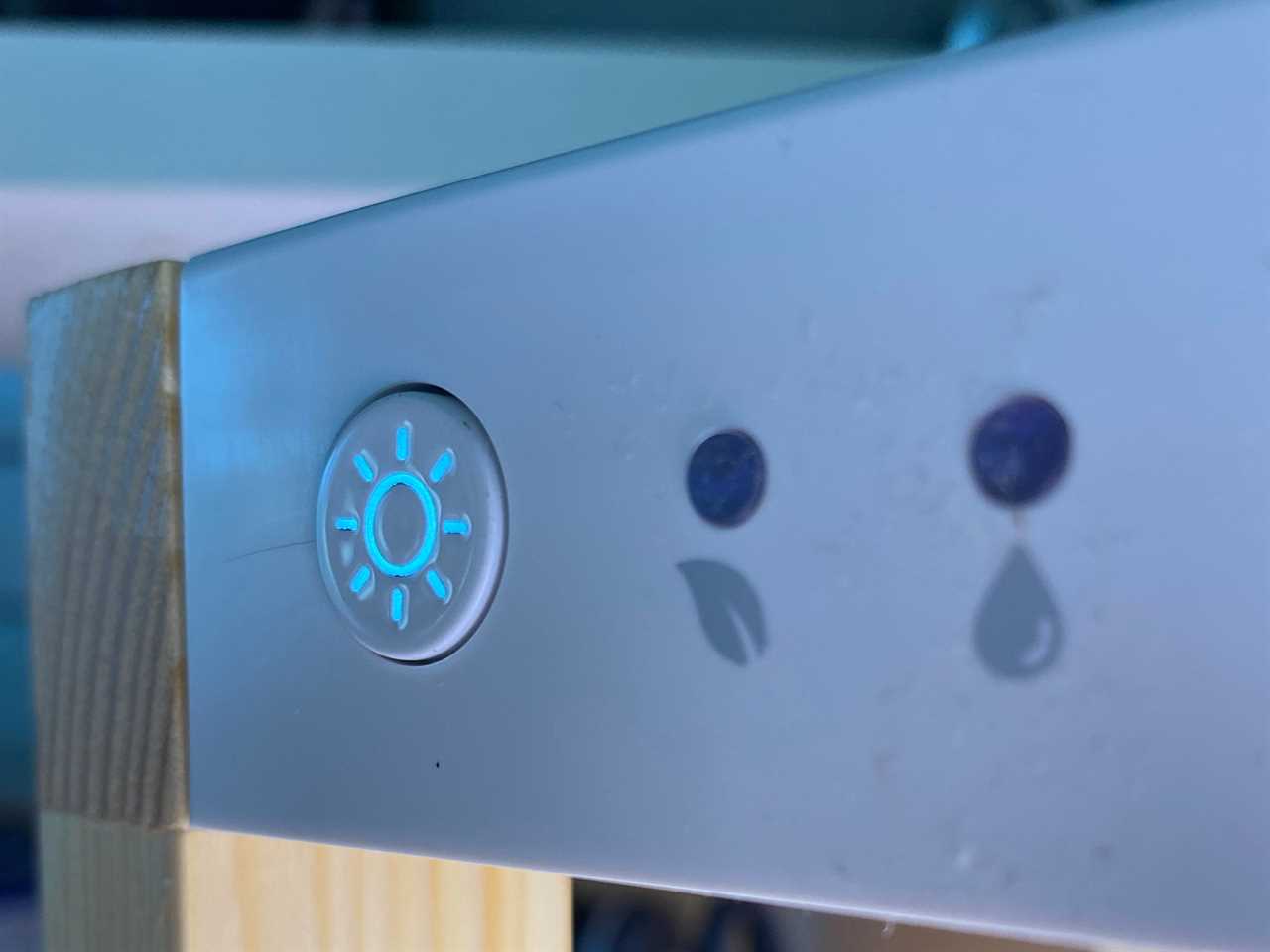
Steph Coelho/Business Insider
I consulted with Deane Falcone, chief science officer of Crop One, a vertical farming company, to get expert insight on indoor growing and what to look for when choosing the best indoor garden for you.
Light
Dr. Falcone recommends using a grow light on a timer when gardening indoors. Thankfully, most high-quality smart indoor gardens have the lighting automatically set for the user. Additionally, gardens with LED grow lights are a good choice because they're cool to the touch and require less energy.
Plants grown with plenty of light don't just grow faster, they look sturdier and less lanky than those grown with speckled light. Companies that sell windowsill gardens and suggest you rely on sunlight are, frankly, full of BS. If you can't garden outside in full sun, LED lights are the next best thing.
Ease of use and space
I recommend looking for an indoor garden that has enough space for what you plan to grow. If you want a steady supply of greens to feed a family of four, go with a full-sized unit, which is about the size of a bookcase. If you just want fresh herbs from time to time to add to your recipes, opt for a smaller countertop garden. Whatever you choose, it should fit your space in both aesthetic and size.
An indoor garden should also be easy to use and clean. If it's not, you'll find yourself neglecting it. Just like a well-designed outdoor garden is a pleasure to cultivate, a well thought-out indoor garden is more likely to become a routinely used household fixture.
Hydroponic vs. soil-based systems
A hydroponic garden is soilless. Plant roots sit in and get their nutrients directly from the water. By contrast, in a soil-based garden, the roots can't grow past the soil pods and eventually become root-bound.
In my experience, hydroponic units tend to produce plants with more life than units with soil-based pods. Herbs grown in a hydroponic system will last months and months as long as you continue to harvest them. Cut-and-come again plants, like lettuce, will also continue to produce until they send out a flower stalk — at which time they become bitter.
And unless you're looking for a fun indoor growing project to do with kids, steer clear of potted herb kits. The plants never last long, and they're a pain to keep alive.
Smart features
Smart features aren't a must, but they're mighty convenient. Tracking growth in an app and receiving reminders to water or add nutrients is helpful for people who are new to gardening (or scatterbrained).
Look for features like water sensors, automatic nutrient reminders, and harvest tracking. They'll make your life easier. The Rise app, for example, even alerts you when it's time to harvest plants. Sometimes the timing is a bit off, but the alert is still a good reminder not to let food go to waste.
How we tested the best indoor herb gardens
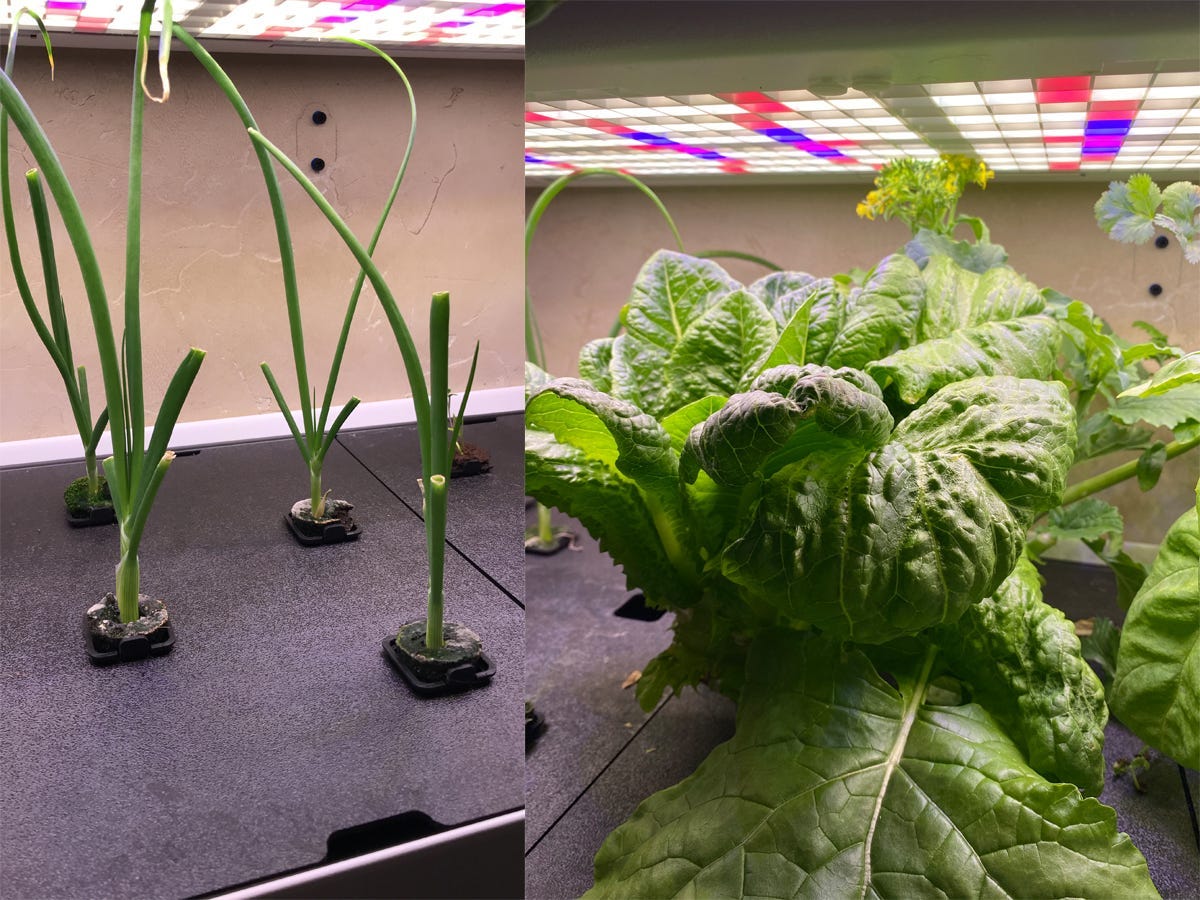
Steph Coelho/Business Insider
To test the gardens featured in this guide, I used the majority for at least a month and some for longer. I also considered units tested by other Business Insider contributors and for products I was not able to get my hands on, I closely examined dozens of customer reviews and feedback.
Here's the criteria I used when evaluating each unit.
- Setup: I was looking for gardens that were easy to set up and use. Was the setup complicated? Would it be simple for someone new to gardening?
- Performance: It's tough to evaluate growth rate among gardens because there are so many variables involved, so I was more concerned about whether taking care of the garden was intuitive. Also, if a garden produced consistent growth failures, it wouldn't pass the test.
- Special features: The beauty of indoor gardening units is that they can feature a lot of cool tech that's impossible to use outside. When testing the gardens, I was looking to find out if any smart features were easy to use and whether they added any value to the product.
The pros and cons of indoor gardening
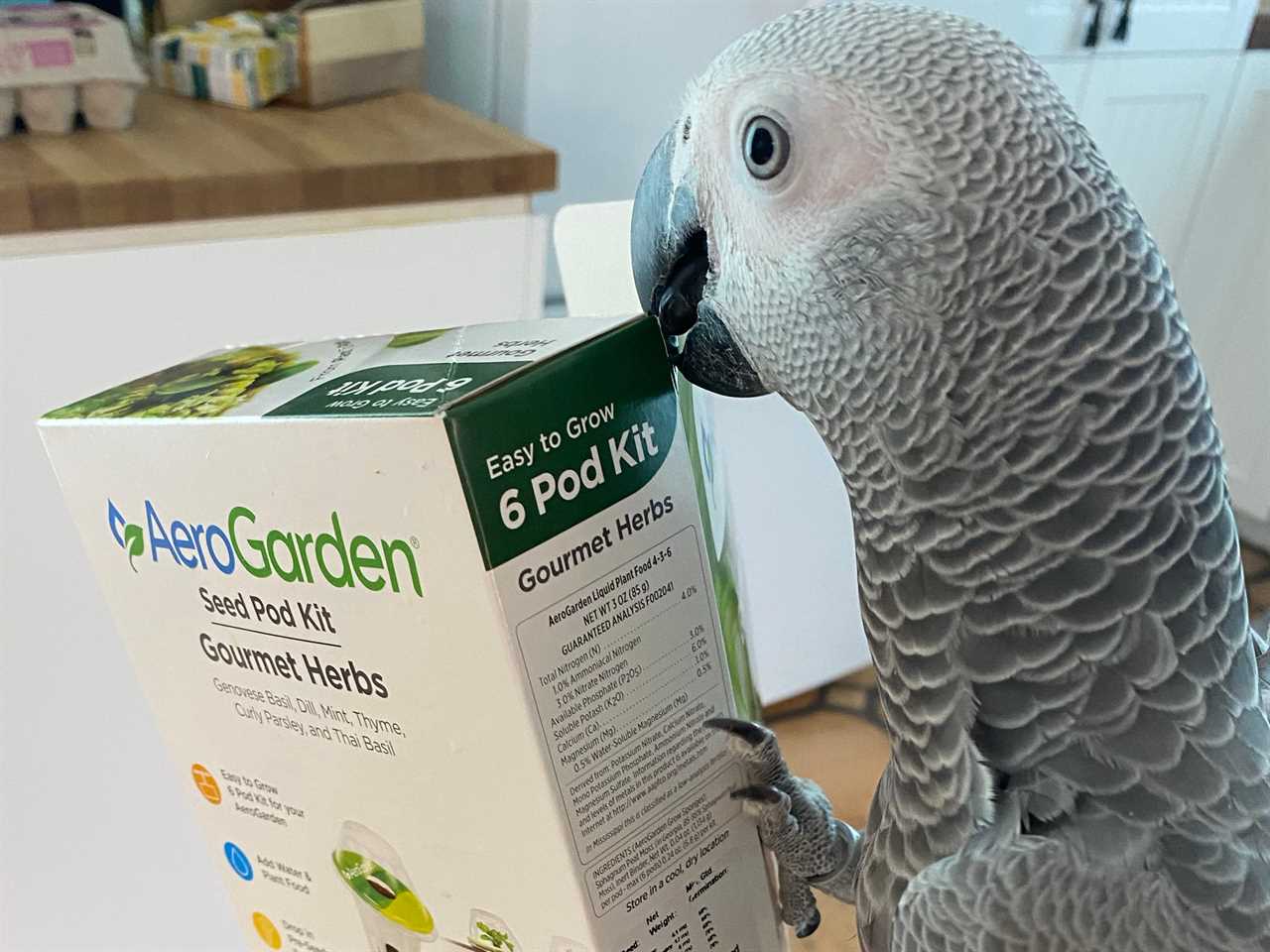
Steph Coelho/Business Insider
Pro: Consistency in growing conditions
One significant advantage of indoor gardening, says Dr. Falcone, is the ability to control nearly all variables. With an indoor garden, you control the weather. Conditions tend to be a lot more consistent inside than they are outside.
Pro: More tender, uniform produce
Plants have it good indoors and, in turn, produce is a lot more uniform. Because plants don't have to react to changing conditions, they tend to be more tender and delicate than those grown outside, which can sometimes end up fibrous and tough, said Dr. Falcone. Contrary to popular belief, food grown hydroponically can taste more flavorful than produce grown outside since you have so much more control over the growing conditions.
Pro: Fewer pests
You also don't have to worry about pests to the same degree, he adds. Insect infestations can still happen, but they're much easier to control. My Rise Family Garden was infested with fungus gnats earlier this year because I brought in an outside plant without thinking, but thoroughly cleaning it out with vinegar stopped the problem in its tracks.
Con: Creating consistent produce requires planning
While indoor gardening is easy, it still requires some planning like a regular outdoor garden does. "You plant everything at once. Guess what? You get to harvest everything at once," says Dr. Falcone. Succession planting — planting crops in staggered intervals — ensures that you'll always have something fresh on hand. Of course, this means your indoor garden won't look as full and vibrant.
Con: Feels less like "gardening"
Even as someone whose job involves indoor hydroponics, Dr. Falcone also concedes that there's nothing that can replace the aesthetic of outdoor gardening. Wanting to be outside and interact with nature is a big part of why he and his wife still garden outdoors.
Con: Limited space
While indoor produce will grow big if you let it, you're generally limited in terms of space. Tomato plants can't grow as tall as they would outdoors, for instance. You're ultimately constrained to the size of the garden you're growing in.
Indoor garden FAQS

Steph Coelho/Business Insider
Do I need to connect my indoor hydroponic garden to my home's plumbing?
No. Most all-in-one hydroponic gardens have a water tank and a pump that circulates water and nutrients. When the water level is low, you refill the tank with water from your tap.
Can I grow root crops indoors?
Technically it's possible, but it'll require experimentation and the produce probably won't look very pretty. You're better off sticking with plants that primarily grow above ground.
Does my water quality matter?
As a beginner, you probably don't need to worry too much about the water quality. "If it's good enough for humans to drink, it's certainly good enough to grow plants," said Dr. Falcone.
However, advanced growers may want to use filtered water. Water quality can impact the pH of your system, which, in turn, can mess with nutrient uptake. This can affect plant growth and cause things like leaf yellowing.
If you want to get even more precise, you can keep tabs on pH with a meter (5.5 to 6.5 is a good range to shoot for with hydroponic growing). You can add pH-lowering product to a hydroponic garden to make adjustments.
Our top-rated garden also comes with a kit for calibrating your water pH, and the app makes it extremely easy and user-friendly even if you don't have a green thumb.
Besides vegetables, what else can I grow in my indoor garden?
You can grow some fruits. Strawberries, for example, grow well indoors, as do self-pollinating plants like tomatoes and peppers. For cucumbers and squash, you'll need to do the work usually done by bees and other efficient insects. You can use a paintbrush or your finger to gently "tickle" the flowers to pollinate them, but a tool like the Bee the Bee Pollinator makes it more fun.
Additionally, many indoor gardeners experiment with growing flowers. If you have space under the lights, you can also give light-starved houseplants some love.
How do I avoid pests like fungus gnats?
Wrapping plant pods in foil (and poking holes to accommodate sprouting plants) almost wholly eliminates algae growth which is a huge attractant for certain pests like fungus gnats.
Do I have to use the nutrients or seed pods sold by a company?
Nope! Seed packets are readily available at hardware stores, nurseries, and online. And hydroponic pods are easy to find at online retailers like Amazon.
For plant food, Dr. Falcone recommends using a complete mixture with a balanced ratio of NPK (Nitrogen, Phosphorus, and Potassium).
Read More
By: [email protected] (Steph Coelho)
Title: The best indoor gardens for growing herbs and vegetables of 2024
Sourced From: www.businessinsider.com/guides/home/the-best-indoor-herb-garden
Published Date: Thu, 07 Mar 2024 14:28:08 +0000
.png)
